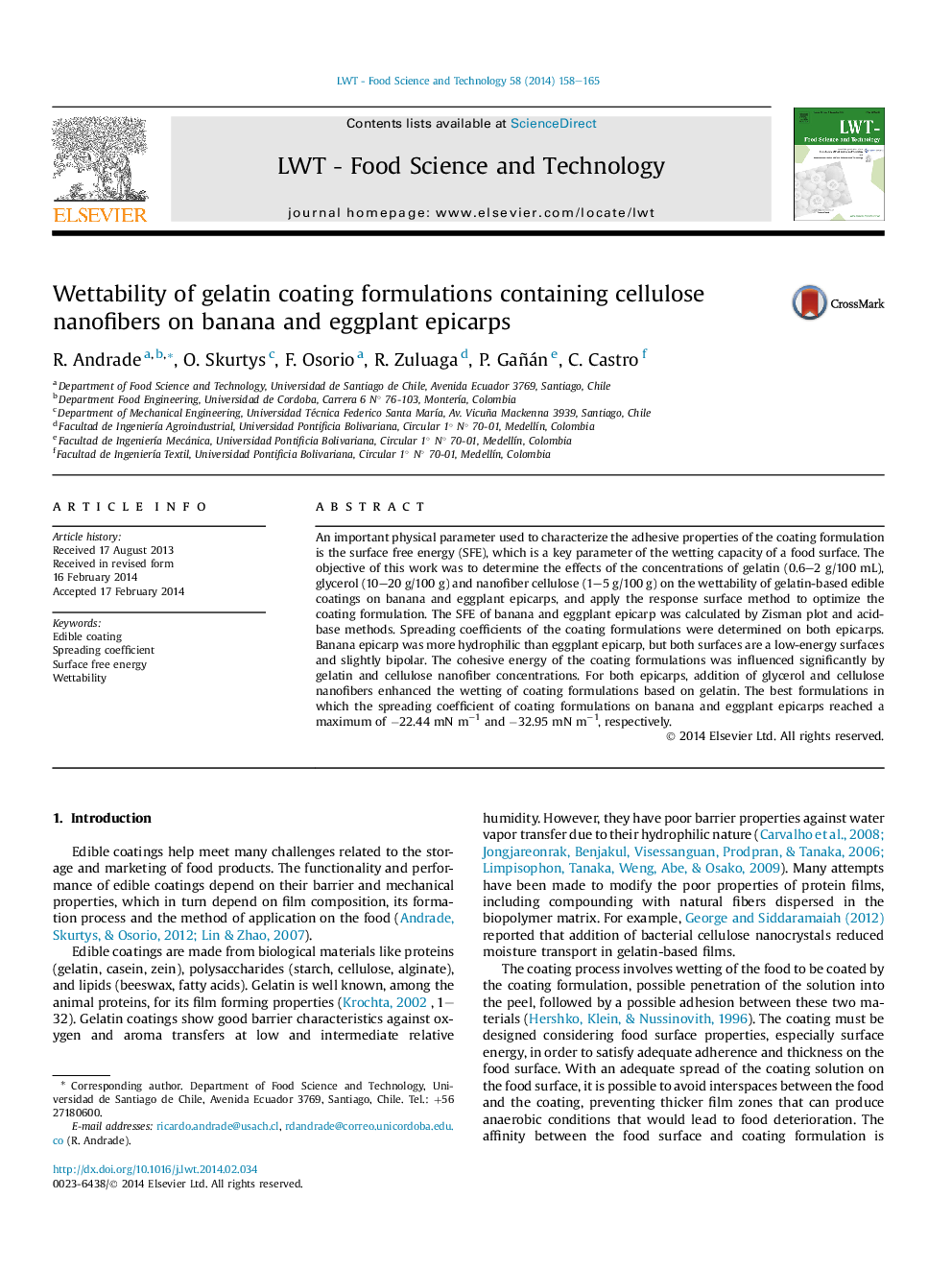| Article ID | Journal | Published Year | Pages | File Type |
|---|---|---|---|---|
| 6404062 | LWT - Food Science and Technology | 2014 | 8 Pages |
â¢Wettability of gelatin coating formulations containing cellulose nanofibers have been assessed.â¢Banana and eggplant epicarp may be considered “low energy” surfaces.â¢Gelatin coating formulations containing cellulose nanofibers wet more on the banana epicarp.
An important physical parameter used to characterize the adhesive properties of the coating formulation is the surface free energy (SFE), which is a key parameter of the wetting capacity of a food surface. The objective of this work was to determine the effects of the concentrations of gelatin (0.6-2 g/100 mL), glycerol (10-20 g/100 g) and nanofiber cellulose (1-5 g/100 g) on the wettability of gelatin-based edible coatings on banana and eggplant epicarps, and apply the response surface method to optimize the coating formulation. The SFE of banana and eggplant epicarp was calculated by Zisman plot and acid-base methods. Spreading coefficients of the coating formulations were determined on both epicarps. Banana epicarp was more hydrophilic than eggplant epicarp, but both surfaces are a low-energy surfaces and slightly bipolar. The cohesive energy of the coating formulations was influenced significantly by gelatin and cellulose nanofiber concentrations. For both epicarps, addition of glycerol and cellulose nanofibers enhanced the wetting of coating formulations based on gelatin. The best formulations in which the spreading coefficient of coating formulations on banana and eggplant epicarps reached a maximum of â22.44 mN mâ1 and â32.95 mN mâ1, respectively.
